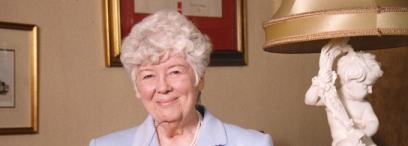To welcome the arrival of 2017, we are releasing almost 64,000 Scottish death entries for 1966. You can search for, view and save these images on the ScotlandsPeople website. We have chosen to highlight the story of Alexander Carrick, one of Scotland’s leading monumental sculptors of the early twentieth century, who died in 1966.
Alexander was born in 1882 in the town of Musselburgh, near Edinburgh. The son of Archibald Carrick and Elizabeth Leith, Alexander came from a family of blacksmiths who were known for creating high quality iron golf clubs.
At an early age, Alexander decided he wanted to work with stone, rather than iron. He began his career by undertaking an apprenticeship in the yard of William Birnie Rhind, a Scottish sculptor from Edinburgh, before studying at the Edinburgh College of Art. It was there that he met his wife, Janet Ferguson MacGregor, who was studying painting. The couple married in 1914.
Alexander won a scholarship to study under Professor Édouard Lantéri, a French-born sculptor and medallist, at South Kensington College, London, and began to exhibit his own works at the Royal Scottish Academy. These included ‘A Boy Putting a Stone’ and ‘Saint Cecilia’, both displayed in 1914. Alexander also executed stone carvings on the Usher Hall and Scotsman Buildings in Edinburgh, and restoration works at Eilean Donan Castle and St. Magnus’ Cathedral in Kirkwall.
Following the outbreak of war, in 1916 Alexander joined the Royal Garrison Artillery as a gunner, serving in Belgium until the end of the conflict. Whilst in the trenches just outside Ypres, he moulded a piece called ‘The Gunner’ using clay he dug from the trenches. With the help of a Belgian artist living nearby, he had it cast in plaster, and upon his return to Scotland, cast it in bronze.
Throughout the 1920s, Alexander continued to exhibit his work. He had been highly influenced by the sights and experiences of the war, and he was commissioned to produce war memorials in stone and bronze across Scotland. His memorials include those at Fraserburgh, Berwick and Killin in Perthshire.
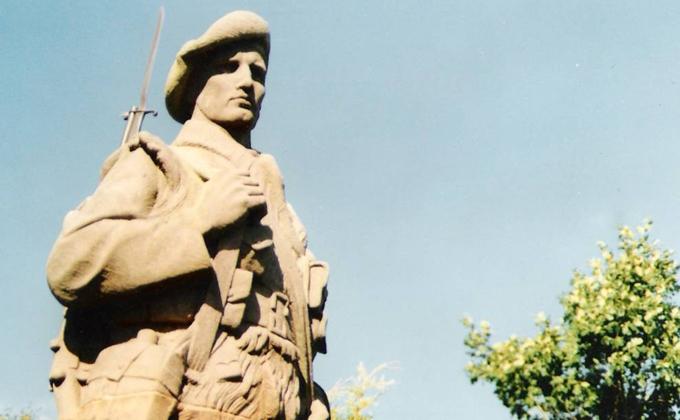
Detail of the Killin War Memorial in Perthshire. Unveiled 20 October 1920.
Credit: public domain image, via Wikipedia
Other work included the small carved virtues of ‘courage’ and ‘justice’ and relief panels representing the Royal Engineers and the Royal Artillery, all at the Scottish National War Memorial, and a figure of Sir William Wallace set in a niche at the entrance to Edinburgh Castle, unveiled in 1929.
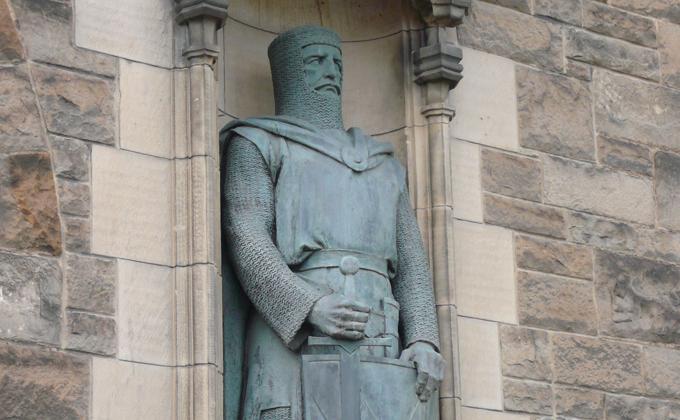
The statue of William Wallace at Edinburgh Castle
Image: Crown copyright, National Records of Scotland
In the 1930s he undertook a commission to produce sculptures for St Andrew’s House, the new government buildings in Edinburgh, to the designs of the London sculptor William Reid Dick. His final prestigious work was that of the bronze groups ‘Safety’ and ‘Security’ which flank the entrance of the Caledonian Insurance Building at Saint Andrew Square, Edinburgh.
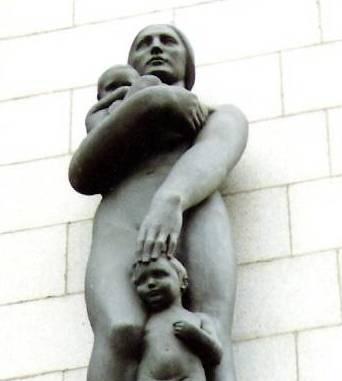
The statue ‘Security’ at the Caledonian Insurance Building, Edinburgh.
Credit: public domain image, via Wikipedia
With the outbreak of World War Two, and a drop in the volume of construction work being undertaken, Alexander was went into retirement. He settled with his wife in their holiday cottage in the Scottish Borders in 1942. His work appeared at an RSA exhibition for the last time in 1954 when the bronze busts of his two grandchildren were displayed. He died in Galashiels on 26 January 1966.
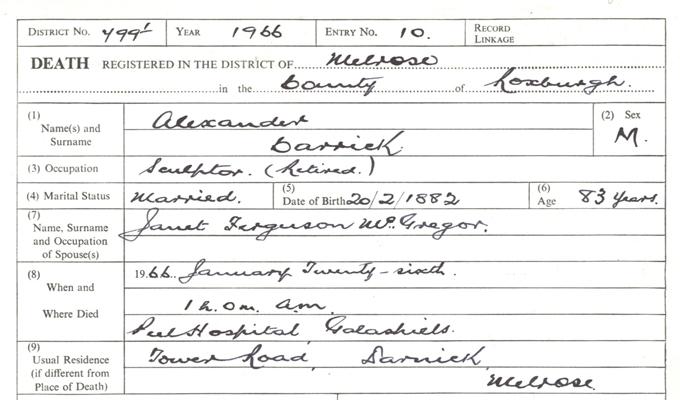
Death entry for Alexander Carrick, 26 January 1966
Crown copyright, National Records of Scotland, Statutory Register of Deaths, 1966, 799/1/10
For further information about the life and works created by Alexander, please visit the website dedicated to him.


